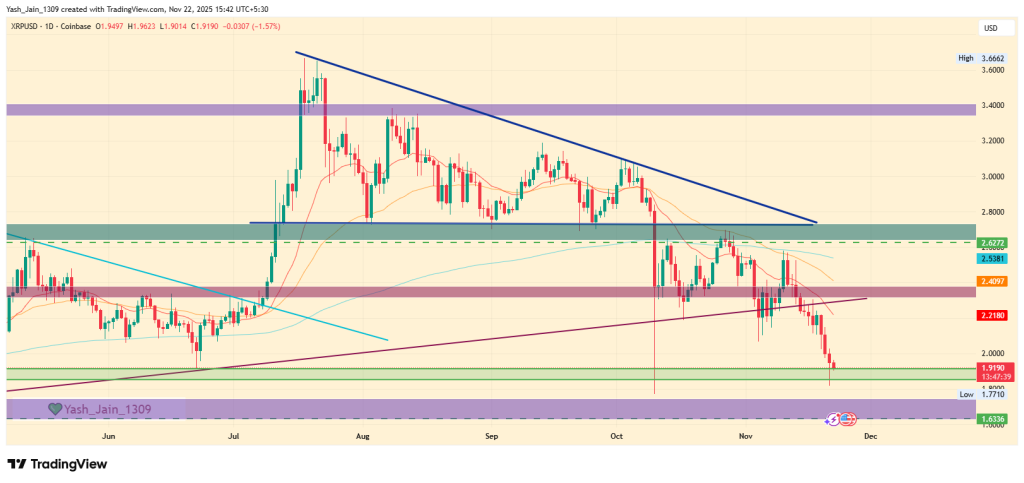Monero community pushes back as Qubic’s 51% hash rate bid falters
A fast‑moving fight over mining power consumed Monero’s weekend after Sergey Ivancheglo used X to promote an “economic” campaign to dominate the network’s hashrate, which was met by community resistance.
The fight escalated after Ivancheglo, the figure behind Qubic and better known as Come‑from‑Beyond (CFB), confirmed the takeover intentions with an incentive-driven 51% attack.
As a response, the community gathered in the “supportxmr.com” pool to hold the majority of Monero’s mining capacity.
The 51% takeover plan
Qubic’s plan surfaced across X and Reddit as a pay‑to‑switch mining campaign. By offering richer payouts than ordinary pools, Qubic aims to attract enough Monero miners to its pool to surpass 51% of the network hash, a threshold that would enable it to orphan rivals’ blocks, delay confirmations, and potentially censor transactions.
Ivancheglo publicly flagged Aug. 2 to Aug. 31 as a window of elevated risk and urged exchanges to raise Monero deposit confirmations, framing the move as a precaution during their “test.”
On Reddit, Monero miners and users viewed the campaign as a live 51% attack attempt, driven by incentives rather than a code exploit. Posts in forums dedicated to the Monero community on Reddit tracked Qubic’s pool share and warned that concentration could enable orphaned blocks, delayed confirmations, or transaction censorship.
A thread titled “Qubic/Sergey Ivancheglo 51% attack plans” complained of “silence from most devs,” while another, “The timeline for the 51% attack is August,” claimed the pool had mined 31 of the last 100 blocks and urged a community response.
Community reaction
Analyst Dan Dadybayo explained on an X thread how Monero was under attack through an incentive campaign, arguing that intent is secondary to the risk of centralization when a single pool can outbid the rest of the network for hashpower.
His follow‑ups described why Monero’s CPU‑friendly RandomX and highly mobile miners make such an attack plausible if incentives are aligned.
The Monero subreddit’s tone oscillated between alarm and organization.
Members of the Monero community highlighted on X and Reddit Qubic’s rise into the top tier of pools through richer payouts and warned that waiting for 40% and 50% dominance would be too late.
The reaction led to the community rallying behind the mining pool “supportxmr.com” to battle Qubic in an attempt to lead Monero’s mining capacity. As of press time, the 4,970 miners composing the pool accounted for 28.7% of the network hash rate, having mined 36 out of the last 100 blocks.
Nevertheless, a Qubic spokesperson told CryptoSlate that the 51% takeover will still be attempted, adding:
“The goal is not to harm, such as tx reversals, but to make every miner on the Monero network join the QUBIC mining pool.”
Furthermore, Qubic highlighted a June proposal in which the community must decide whether other blocks should be orphaned in the event of a 51% attack. Among what the proposal portrays as benefits are reduced fees for Monero users, boosted revenue for miners, integration with Qubic miners, and a “practical test of a 51% attack and possibility to analyze its impact on XMR price.”
As of press time, there is no commentary in the proposal.
Benevolent attack
Ivancheglo dismissed alarm as “fear‑mongering,” even as his project urged exchanges to increase Monero confirmation thresholds, escalating concern across Reddit and crypto Twitter.
He framed the effort as industry research. He said he was “trying to find a countermeasure to Qubic’s 51% domination,” a claim that did little to calm Monero users who worried the “demo” could do real damage.
In addition, Ivancheglo said:
“This is very important to the #cryptocurrency industry because one day we all may face a non-benevolent attack.”
The uneven tone has led to rampant speculation that Qubic may want to normalize a majority‑hash posture while portraying it as benevolent.
The episode highlights that proof-of-work networks can be pressured not only by raw hashrate rentals but also by token-driven incentive loops that outpay organic mining.
The post Monero community pushes back as Qubic’s 51% hash rate bid falters appeared first on CryptoSlate.
Disclaimer: The content of this article solely reflects the author's opinion and does not represent the platform in any capacity. This article is not intended to serve as a reference for making investment decisions.
You may also like
Bitcoin Likely to Remain Under Pressure as Massive ETF Outflows Shake the Market
XRP Price Prediction: Is This Dip a Buying Opportunity?

VanEck CEO Flags Quantum Threat to Bitcoin; Firms to Walk Away?
Crypto Eyes Relief Rally as December Fed Rate Cut Odds Surge to 71%
